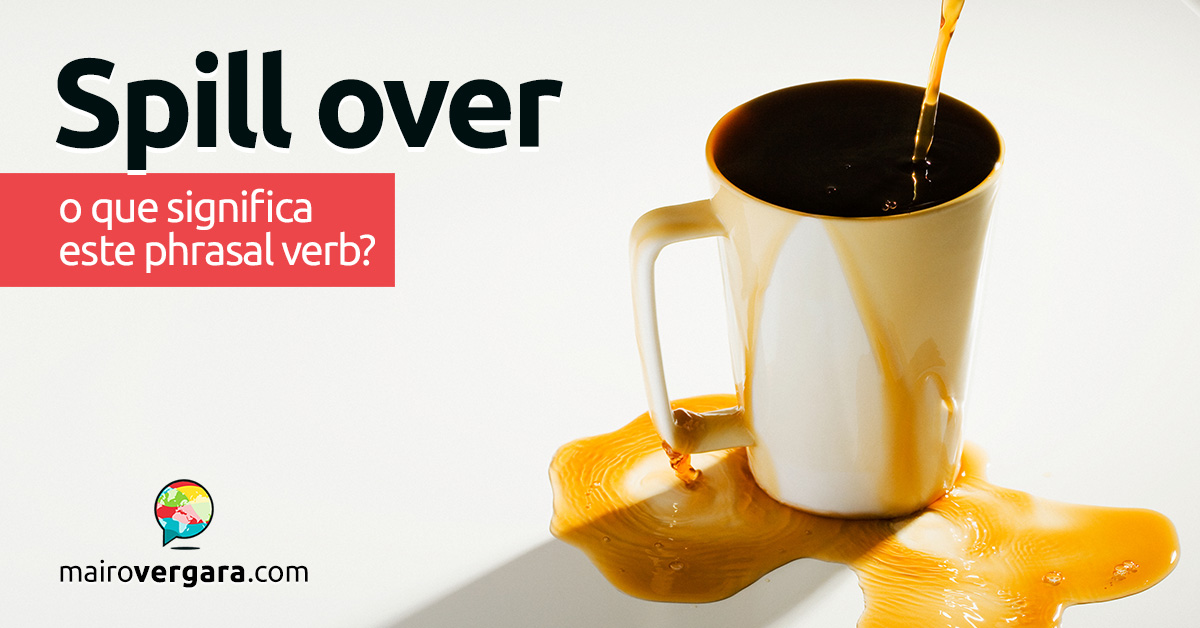Aprendendo inglês com vídeos é uma série de posts em que traremos para vocês vídeos acompanhados de transcrições e traduções, pois este é um material de altíssima qualidade para qualquer estudante de inglês. A grande maioria dos vídeos virão do YouTube, assim como forma de retribuir aos criadores dos vídeos incríveis que vamos usar, pedimos que você sempre dê o seu “Gostei” no vídeo (ao clicar para reproduzir o vídeo você verá a opção “gostei” no próprio
How to Make a Very Loud Survival Whistle (Transcrição)
1 – Guys for this video, I’m going to show you a cool little survival hack you can use to make an emergency survival whistle out of an empty bullet casing. So let’s imagine you’re stranded in the forest and you need some way to signal for help when you glance down and at the forest floor and you just happen to notice of these cartridge casings sitting under a branch. This shell is from a 223 cartridge but any long narrow casing like this should work.
2 – Now the first thing we need to do is actually shave off the tip of this cartridge casing so we’re just left with this fat part at the bottom. You could easily do that with some concrete or a rock like this. And we’re going to use that also as improvised sand paper because what we need to do is to sand the brass all the way back to this bigger casing back here. It’s going to take a little bit of work but it’s very possible to do.
3 – Now if you are somewhere closer to civilization you could use concrete, the curb on your road or even a paver stone. Or if you even have some metal files that’ll work better but essentially the idea is that we need to shave this back until it gets to about there. It’s going to take a few minutes but eventually you can see we actually get the cartridge casing ground down and there are some little bits inside where you can take a sharp rock now and just kind of dig those out to clean it up.
4 – We want the inside of that to be as smooth as possible. You can see there are like little flakes of brass in there that need to come off. That’s what we’re looking for, right there. The next thing we need to do is come back about half to three quarters of an inch and grind a small hole in the top in a way that there’s a flat side on the mouth end and then a gradual sloping side towards the back.
5 – Take your casing with the open end, overlap the edge a little bit and then tilt it a little bit and at that angle we’re just going to run this back and forth and it’s going to take a few minutes but we want to keep doing this until we dig a hole right through the other side of the casing. This is going to be the whistle part of our whistle.
6 – Already starting to get a hole through there, you can see it’s already started to take the whistle shape. This edge could be a little bit flatter so I’m going to just adjust my angle a little bit. There we go. Now all this brass in here, we can just carve that out with a rock or a knife or a file or whatever the case may be but we just want to clean up that hole and open it up.
7 – Alright, so that actually went a lot faster than I thought, maybe about 2 minutes and we got this thing ground down. If you look at the profile of this casing, y’know, you can see that there’s a vertical line near the mouthpiece and then a sloping line toward the back of the bullet and that’s exactly what we’re looking for.
8 – And there’s still a piece on the inside there but I can use a stick to go down there and, here look, there’s the whole flap right there. You might just want to rub it back and forth just a few times to clean up some of those brass burs but essentially that is our whistle.
9 – What you need to do now is find some kind of a stick that will fit perfectly into the front piece here with just enough of a gap on the top to allow air to flow in and split over that whistle on the back. All you have to do is a little bit of trial and error until you find a nice tight fit and then take a little bit off the top.
10 – Now we can use the rock to grind this down to make a flat surface as well but essentially we’re just looking for something that will just fit very snuggly inside of that casing. The last thing to do is just to trim a little bit of this stick off the top so that we have an air gap for our air to flow through and split on the whistle.
11 – So let’s mark that piece right there and then either file or carve with a knife a little bit off the top. Just a sliver. And that looks good, so now all we have to do is break the stick off, file it down and we’ve got ourselves a whistle. Mmm, fibre. That sounds amazing, so look at the positioning of that. See how the wood is actually right on the indent where it starts sloping upward?
12 – So right there is a perfect bullet shell whistle that we made out of stuff that we found right here in the forest. How cool is that guys? Actually it hurts my ears. And definitely loud enough to find some help when you’re in need in the woods. So there you have it guys – a cool little trick for turning scrap bullet casings into emergency survival whistles. Thanks so much for joining me in this project and I’ll be looking for you in the next video. Talk to you then.
Como Fazer um Apito de Sobrevivência Bem Alto (Tradução)
1 – Pessoal, neste vídeo eu vou mostrá-los um pequeno “hack” de sobrevivência legal que você pode usar para fazer um apito de emergência para sobrevivência feito de uma cápsula de bala. Então vamos imaginar que você esteja isolado/perdido na floresta e você precisa de algum meio para sinalizar por ajuda, quando você olha para baixo e no chão da floresta você acaba notando essas cápsulas de cartuchos/balas em baixo de um galho. Essa cápsula é de um cartucho 223, mas qualquer cápsula cumprida e estreita como esta deve funcionar.
2 – Agora, a primeira coisa que nós precisamos fazer é na verdade raspar a ponta desta cápsula de cartucho e nós ficamos somente com esta parte grossa do fundo. Você poderia fazer isso facilmente como algum concreto ou uma pedra como esta. E nós vamos usar isso também como uma lixa improvisada, porque o que nós precisamos fazer é lixar o cobre até chegar nessa parte mais grossa da cápsula. Vai dar um pouco de trabalho, mas é bem possível de fazer.
3 – Agora, se você estiver em algum lugar perto da civilização, você pode usar concreto, o meio-fio da sua rua ou até mesmo um pedaço de pavimentação. Ou se você tiver alguma lima de metal, ela vai funcionar melhor mas, em essência, a ideia é que nós precisamos raspar essa parte até que ela chegue até mais ou menos aqui. Vai levar alguns minutos, mas no fim você pode ver que nós de fato conseguimos gastar o cartucho. E há algumas rebarbas no lado de dentro nos quais você pode usar uma pedra afiada agora e meio que raspa-los para fora para limpar a cápsula.
4 – Nós queremos que o interior dela fique o mais liso possível. Você pode ver que existem alguns pedaços de bronze lá dentro que precisam sair. Aquilo é o que estamos procurando, bem ali. A próxima coisa que nós precisamos fazer é voltar cerca de metade de três quartos de uma polegada e raspar um pequeno buraco na superfície de modo que haja um lado plano no lado da boca e depois um lado gradualmente inclinado em direção à parte de trás.
5 – Pegue sua cápsula com o lado aberto, coloque um pedaço sobre a aresta e então incline um pouco e, neste angulo, nós vamos mexer para frente e para trás. E isso vai levar alguns minutos, mas nós precisamos/queremos continuar fazendo isso até que nós furemos um buraco que vare do outro lado da parede da cápsula. Esta será a parte de assobio do nosso apito.
6 – Já começando a termos um buraco aqui, você pode ver que já começou a tomar a forma de um apito. Esta aresta poderia ser um pouco mais plana, então eu vou só ajustar meu ângulo um pouquinho. Aí está. Agora, todo esse bronze aqui dentro, nós podemos simplesmente raspar pra fora com uma pedra ou uma faca, ou uma lima ou seja lá o que for, mas nós simplesmente queremos limpar esse buraco e abri-lo.
7 – Certo, então isso foi um pouco mais rápido do que eu pensei, talvez cerca de 2 minutos e nós já conseguimos raspar essa coisa. Se você der uma olhada no perfil desta cápsula, sabe, você consegue ver que há uma linha vertical próxima à parte da boca e então um a linha inclinada em direção à parte de trás da bala, e isso é exatamente o que nós estamos buscando.
8 – E ainda tem uma pedaço do interior ali, mas eu posso usar um graveto pra chegar lá e, aqui, olhe. Tem uma aba inteira bem ali. Você pode querer simplesmente lixar ela para frente e para trás só mais algumas vezes para limpar um pouco dessas pontas de bronze, mas essencialmente aqui está nosso apito.
9 – O que você precisa fazer agora é encontrar um tipo de graveto que vai encaixar perfeitamente dentro da parte da frente aqui, com só um pouco de espaço na parte de cima que permita o ar fluir e se dividir pela parte de trás do apito. Tudo o que você precisa fazer é um pouco de tentativa e erro até achar um bom encaixe apertado e depois tirar um pouco do topo.
10 – Agora nós podemos usar a pedra para lixar o graveto para fazer uma superfície plana também, mas em essência, nós estamos procurando algo que irá se encaixar bem “confortavelmente” dentro da cápsula. A última coisa a fazer é simplesmente alinhar um pouco este graveto com as extremidades para que nós tenhamos um espaço de ar para o nosso ar fluir e se espalhar pelo apito.
11 – Então vamos marcar essa peça bem ali e depois lixar ou esculpir a parte de cima com uma faca, só uma lasquinha. E ele parece bom, então agora tudo que temos que fazer é quebrar o graveto, gasta-lo e nós temos um apito Hum…Fibra. Ele soa muito bem, então olhe para o posicionamento disso. Você vê que a madeira está na verdade bem no entalhe onde começa a inclinar para cima?
12 – Então aí temos um apito perfeito de cápsula de cartucho que nós fizemos com coisas que encontramos bem aqui na floresta. Que legal é isso, não? Na verdade, machuca meus ouvidos. E é definitivamente alto o suficiente para conseguir ajuda quando você estiver precisando na floresta. Então aí está, pessoal – um truquezinho legal para transformar cápsulas de bala velhas em apitos de sobrevivência para emergência. Muito obrigado por se juntarem a mim neste projeto e eu espero vocês no próximo vídeo. Falo com você depois.
Espero que vocês tenham gostado do vídeo de hoje e da transcrição/tradução! Como sempre, não deixem de visitar o vídeo no Youtube e dar o seu “gostei”, pois assim vocês estão ajudando o trabalho dos criadores desses vídeos incríveis! Link para o vídeo no YouTube: http://bit.ly/2gNwYo3 Abração e bons estudos a todos vocês!










